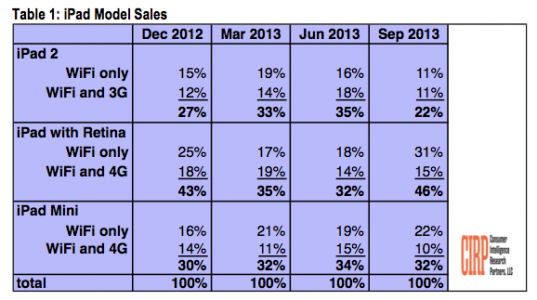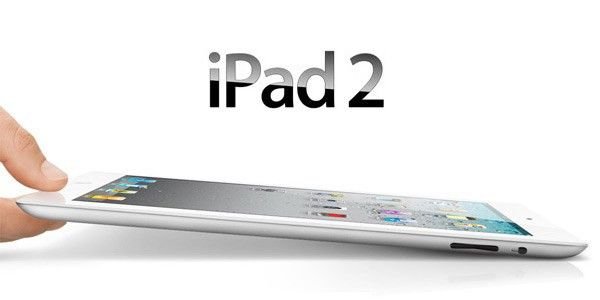RaduTyrsina
News Team
The iPad Air and the iPad Mini with Retina display will go on sale starting with November 1st, and after some first impressions and hands-on thoughts, it’s almost obvious that Apple will manage to sell a lot of these shiny toys. But one thing that surprised us during the launch event was that Apple has decided to keep selling the iPad 2, despite the fact that it has been on the market since the month of March, 2011.
There are a few reasons why Apple continues to sell the 2-years old iPad and we’ll try to explain them.
First of all, as we have reported earlier this week, according to data usage reports from mobile analytics company Localytics, the iPad 2 still remains the most popular Apple tablet on a global scale with a percentage share of 38%. The third generation iPad is on second place, with a share slightly below 20%. Now, a new report (you can see it above) seems to show the same thing, but referring to the United States market.
According to CIRP (Consumer Intelligence Research Partners), the iPad 2 accounted for 22 percent of the iPads sold in the U.S. during the quarter that has ended on September 30, this year. It’s impressive that a device that might seem “obsolete†has managed to snag so many sales, right before a much-expected unveil event. Simply put, the research from CIRP shows that customers are still buying the two-year old tablet.
Actually, when asked at Apple's event, Tim Cook himself said only that there was still demand for the iPad 2 so they just wanted to meet it. CIRP co-founder Josh Lowitz told AllThingsD:
“The conventional wisdom on the iPad 2 is that education and corporate customers still need that device. But we think that consumers are going to show less and less interest in it. Already we have been seeing some decline in the iPad 2 share of overall iPad sales.â€
As mister Lowitz points out, what particularly seems to be the reason for good iPad 2 sales is the fact that schools and enterprises buy in bulk quantities. iPad 2’s 30-pin connector is also particularly important to education institutions as they seem to have a large investment in charging racks and other accessories the depend on the 30 pin connector. A commenter on TheVerge puts it very simple:
“If they are unable to replace a broken iPad with another that has a 30 Pin connector it would cause problems with their iPad support infrastructure.â€
When it comes to businesses, here is another interesting input from a commenter on MacRumors:
“As an interesting side anecdote, something like 90% of the small coffee shops, cafes and local stores I go to are using Square. Not to mention farmers markets, food carts, massage therapists with folding tables, dog walkers, baby sitters, etc.
One cafe I know was spending $1000 a month for a regular POS system that didn't provide ANY metrics for that price, JUST sales processing. They switched to Square on an iPad, ran two months of metrics and proved that sales after 5:00 PM where so low that it was costing them money to be open. Switching to an iPad POS system probably put $10,000 in their pocket in a year. The iPad has been a fundamental business enabler in subtle but powerful ways. Which have nothing to do with retina displays and fast graphics and the like.“
There seem to be even simpler explanation to why consumers might choose a cheaper, but outdated iPad. Patrick Moorhead, principal analyst at Moor Insights & Strategy, explains:
"It's all about size. There are a lot of people who walk into a store with their minds already set on a 10-inch tablet or a 7 or 8-inch tablet, and they go from there."
Ross Rubin, principal analyst at Reticle Research, agrees with him
"For many consumers, that extra inch or so of diagonal real estate is of paramount importance."
To remind you, for $399, you could buy a new iPad Mini with Retina display that even has some considerable advantages over the iPad Air. Also, for $20 less, you can buy a refurbished iPad 4. But of course, refurbished products aren’t promoted and exposed in Apple’s store.
Last, but not least, let’s not forget that Apple has important financial gains from selling the iPad 2 and not newer models, since the second-generation iPad tablet is much cheaper to make.
Sources: AllThingsD, MacRumors, TheVerge


